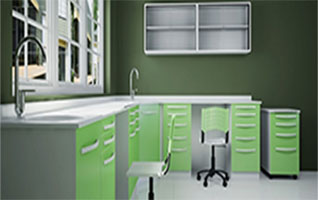Dental Labs
The future of the dental lab industry: The lab industry ain’t never gonna be the same
Steven Pigliacelli, CDT, MDT
“Dental Economics Chief Editor, Chris Salierno, DDS, asked me to write about three trends that worry lab owners. To be honest, I can come up with many more than that, and I can also come up with many positive trends. But the trends that are affecting both labs and dentists are the ones that truly concern me. I don’t begrudge anyone for earning a living or for making choices about how they run their businesses. In the past, it was always up to us to make choices about how we ran our practices and labs, but these days it seems that forces beyond our control are dictating more for our industry.
The age of small dental laboratories
My partner and I started our lab in a basement more than 30 years ago. It was just the two of us, and our business model privileged quality over volume. The prevailing attitude at the time was: the larger the lab, the more frequently quality would be sacrificed.
I will never forget a particular incident that happened when we were still in that basement. One of our first accounts loved our work, but he would never refer his colleagues to us because he didn’t want us to get “too big.” He stopped sending us work when we grew from a two-person lab to an eight-person lab. Even though the quality of our work was maintained (or improved), his perception of our size drove him away. That dentist is probably having a difficult time finding a lab these days.
Have you noticed the disappearance of “basement labs” in your area? Small, quality labs are stuck with paying the highest labor rates for top certified dental technicians (CDTs). They are not able to stamp out a lot of units because the price for CAD equipment is between $25,000 and $250,000. Smaller labs don’t have the buying power to get better deals on equipment or materials. If they can’t lower prices and increase production, the only way to keep the doors open is to raise the price. In an age when dentists are facing decreased patient visits and PPO fees, increasing the lab cost of a crown is a daunting business practice.
The age of larger dental laboratories
The labs that are able to remain in business have grown to become midsized (like mine) or large-scale. Hiring more technicians and investing in sophisticated equipment allows us to increase production and keep costs competitive; however, the challenge that we all face is maintaining quality.
Imagine the fabrication of your crown being reduced to an assembly line of technicians, each doing one part of a multiple-step procedure. Imagine dipping dies all day while the next person waxes, followed by the next person who waxes the margins, then the next one who sprues, and so on. The personal touch of a well-trained technician would become lost as technicians would become cogs in the machine of commercial dentistry. Assembly lines worked for Henry Ford and the automobile industry, but I don’t think they can effectively translate into the dental laboratory industry. An assembly line for manufacturing cars works because there is only one design to follow. We must wonder if individual, custom prosthetic restorations can be made this way.
In the last 15 years, we have seen a dramatic decrease in the quantity of dental technicians and dental labs. Between the sharp decline in dental technician schools and the increase in retiring technicians, the overall number of CDTs is about half of what it used to be-in contrast with the increasing number of dental school graduates. Where will this new generation of dentists send their work?
The lure of offshore
Offshoring is double jeopardy. The work is sent overseas, most commonly to China, where labs may employ up to 1,500 technicians in one factory. We now have the large, corporate assembly line, as well as concerns about foreign-made products. FDA, ADA, HIPAA, and OSHA regulations do not apply there; therefore, we have no guarantee that approved materials are being used. Take a quick look online to see how many products from China have been found to contain lead within the last few years. Houses have been forced to be dismantled due to contaminated Sheetrock. Dog food, toys, and numerous other products have been recalled due to lead contamination. Why would our dental prosthetics be any different? In these countries, US labor laws are not enforced, thus allowing long-outlawed, 19th-century sweatshop practices to prevail.
Just like in your dental practice, my biggest expense is labor. I take pride in the handcrafted work we produce, similarly to how you are proud of the dental team you have assembled. But that means we have to pay salary, overtime, vacation, medical, social security, state taxes, unemployment, and so forth. Competing with offshore labs is impossible for domestic labs, so I don’t even try. The same goes for dental offices. How does a small office compete with large corporations that have massive marketing budgets as well as the buying power to get the lowest rates on materials?
Technology to the rescue
Digital dentistry has arguably been the biggest advancement in years for both dental labs and practices. Digital scanning in-office can reduce overhead and expedite procedures. We have seen previous systems that only resulted in milled or printed models and that still required hand-waxed crowns, but the latest generation enables the digital design and production of restorations that can be fit and adjusted on a final model or produced without a model. Open-architecture scanners give dentists a choice about where to send the scan and allow more labs to participate than previous systems.
In-lab scanners, milling machines, and wax printers now offer labs the ability to merge old-school techniques with new technology. Milled implant frames result in strong, precise frameworks that, if done correctly, can be more precise than traditional cast frames. My lab participated in the original Procera studies in titanium and zirconia crowns and milled titanium bars. We had the first-generation 3M ESPE Lava, Procera, iTero, Encode, Cresco, and Atlantis systems.
Today’s machines are much more advanced and simpler to use. Open-architecture machines such as those offered by 3Shape and Dental Wings enable a lab to buy one scanner and send the scan to numerous facilities to get substructures made, while finishing the final porcelain or acrylic in-lab. Labs can also buy their own milling machines and produce on the premises. This is a more expensive option, but the option exists.
Milled zirconia and milled e.max hold so much promise for the future, and I think we’re almost 100% there. I am a big supporter of CAD/CAM restorations, but we recognize the few remaining limitations that exist. Even when those final barriers are gone, scanners, milling units, and printers will always be tools in technicians’ arsenals. When done correctly by a skilled dentist and a CDT, the end result will be stupendous. When done in an office or a lab that values quantity over quality, the result might be disastrous.
The future of dental laboratories
Small labs, staffed by five people or fewer, will likely be unable to purchase the necessary traditional products or new technology and will certainly not be able to compete financially with the larger labs. These smaller, quality labs will probably close due to inability to compete.
The midsized and larger quality labs will be able to carry on, but getting new labor and affording the continuous upgrades to technology and training will be very costly. Deciding to be “bought out” by allowing a larger entity to finance the business and supply the merchandise will necessarily be attractive.
I believe that dentists will continue to demand the best for their patients and that they will seek out fine craftsmanship from their laboratory partners. To sound like that dentist from my early days, are labs getting “too big”? Have we sacrificed quality to stay in business? I would disagree. Midsized and larger dental labs can maintain their levels of quality by using technology responsibly and resisting the “factory” philosophy.”


